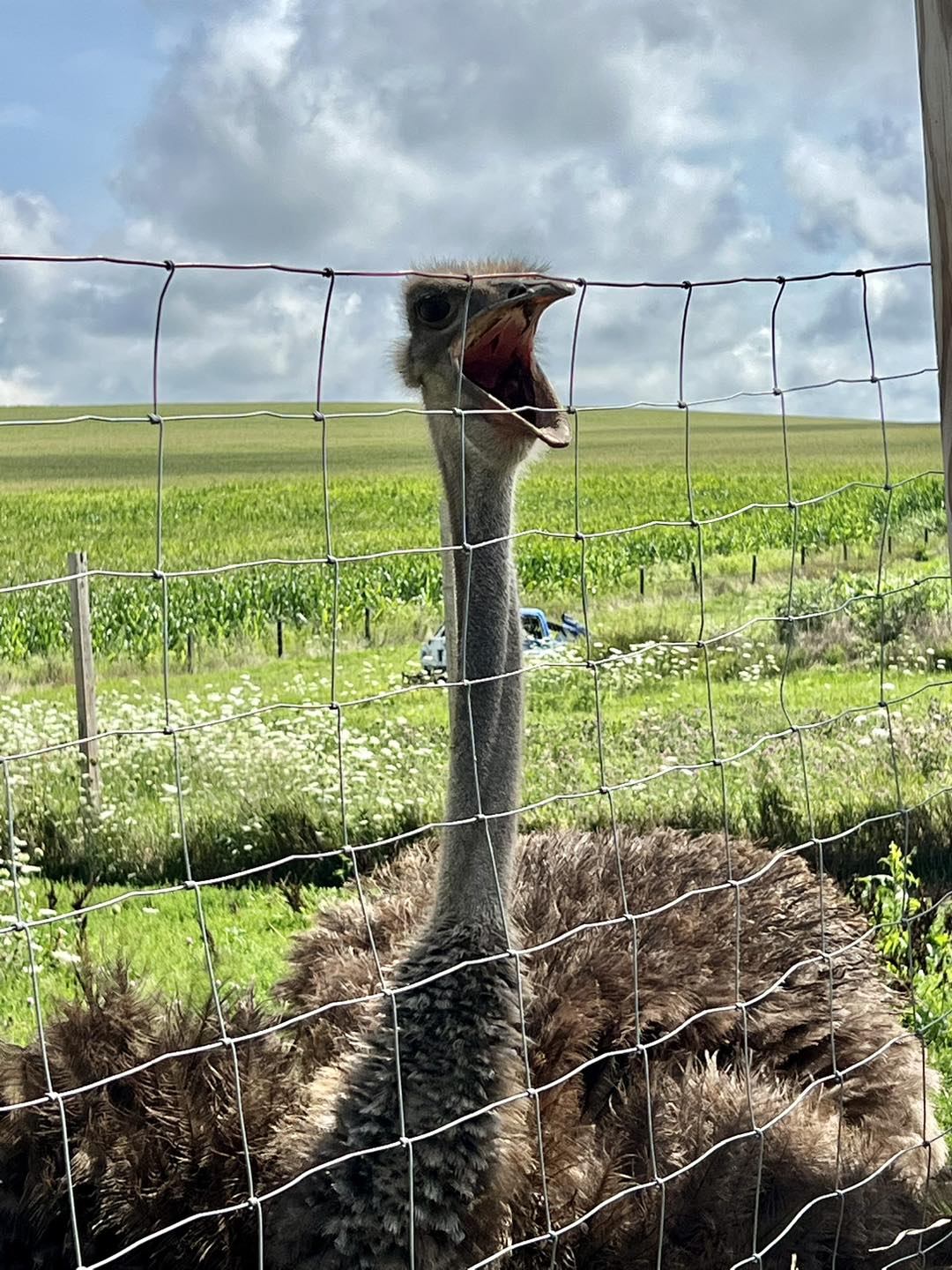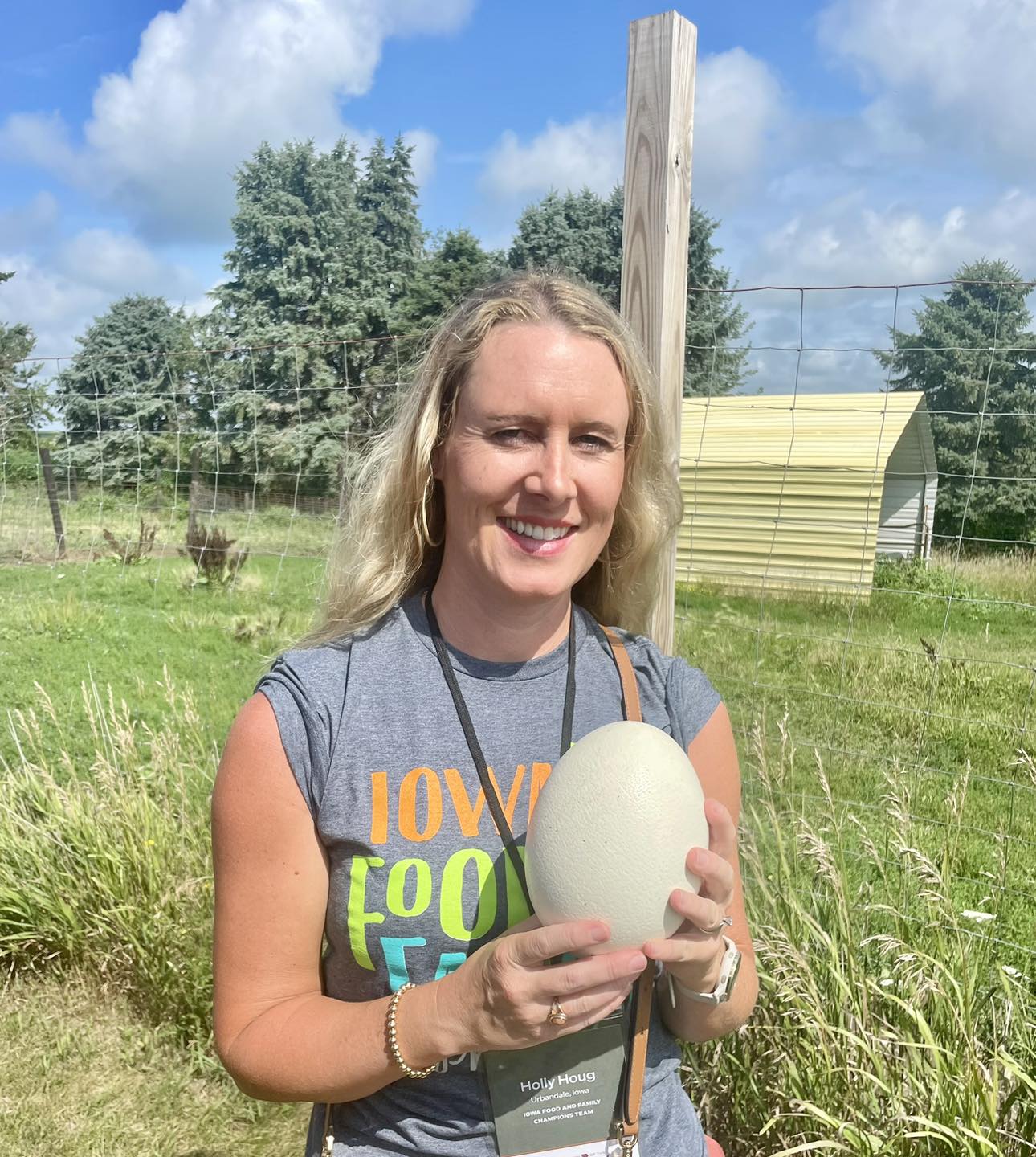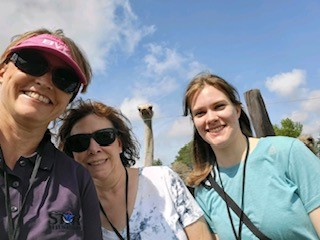Experiencing Ag: Past and Present
September 11, 2023
By Lydia Zerby
Evolution of the Heartland is a one-of-a-kind experience many Iowans recently had the opportunity to attend. This one-day event draws people to the Manning/Audubon area to learn about agriculture, small business and how small communities are thriving. From the website:
The seeds have been planted. Businesses are taking root. The prairie is evolving. Are you ready for what’s next?
The American dream has never been more alive than it is right now in rural Iowa. Investments and advancements are happening in schools, hospitals, tourist attractions, businesses, and even on Main Streets. The Evolution of the Heartland tour is designed to showcase what’s happening in rural Iowa today and highlight how agriculture has been a catalyst for entrepreneurs who believe in growing their dreams and contributing to the greater common good.
This experience intends to leave you with a changed impression of what rural Iowa and agriculture are all about. — evolutionoftheheartland.com
As a sponsor of the event, the Iowa Food & Family Project (Iowa FFP) invited 16 members of our Champions Group and their guests to attend. Each chose their morning and afternoon sessions and shared what they learned, what surprised them and how they will continue to promote agriculture in Iowa. Read on for some of their insights.
Holly Houg, Urbandale
I had the wonderful opportunity to represent Iowa FFP at the Evolution of the Heartland tour, an immersive rural Iowa experience. It was such a fascinating day! We started with a bus ride to the Manning Hausbarn Heritage Park, where we received a bag of Iowa goodies. Then, we enjoyed the Niche Farm Tour, which included an ostrich farm and a yak farm. The ostriches were enormous and so curious. Their eggs were huge and equivalent to 20 chicken eggs! We sampled ostrich meat, and I thought it tasted just like beef.
Then, we attended an Ag Ambassador Luncheon at the Audubon County Fairgrounds. The pork tenderloin, turkey and ham were all smoked by Two Palms Grilling and Catering. It was some of the most flavorful and tender meat I’ve had. The strawberry rhubarb pie was incredible. During the luncheon, I learned this interesting fact: There are 80 state parks in Iowa! Even more interesting was our next stop — a tour of the Templeton Rye distillery. We headed back on the bus to Manning, where we toured the Hausbarn that had been moved here from Germany. Behind it was the Hassler Farmstead, which was built in 1910. The farmstead was ahead of its time, with modern electricity and a carriage house that stored the young owner’s race cars and served as servants’ quarters. The owner had inherited the equivalent of $7 million in today’s money and had the house built for his wife while they were
on their 4-month honeymoon. We also toured a church built in 1913 and moved
11 miles to its current location.
Then we were treated to the best prime rib I’ve ever tasted, yak meatballs, ribs, brats, veggies, watermelon and desserts. We listened to Lieutenant Governor Adam Gregg and ended the evening enjoying live music by a local band called 2 ½ Guitars.
I experienced so much and enjoyed the fun things I learned about small-town Iowa farming. I wouldn’t want to live anywhere else!
Abby Hawkins, Runnells
We began our adventure by checking out our swag bags and gearing up to learn about a few of the hidden treasures in rural Iowa.
First up on the Niche Farm Tour was the Irlmeier Ostrich Farm. Here are some facts I learned:
- An ostrich can reach 10.5 feet tall and weigh as much as 425 pounds.

- They have strong immune systems, resulting in very few vet visits.
- A 250-pound bird results in 100-125 pounds of meat, a dressing percentage of almost 50%.
The next stop was the one and only Iowa Yak Ranch, where we learned about Tibetan yaks.
When processed into yarn, yak hair is similar to cashmere.
- Yaks have three layers of hair that need to be detangled with a fine-tooth comb. This is done by hand for all 20 yaks at the Iowa Yak Ranch. So much brushing!
- Yak meat is lean, high in protein and low in cholesterol, similar to turkey. Like the ostrich meat, it tastes like beef. Both were very tasty!
The next leg of the adventure was the museum tour at Templeton Distillery. It was outstanding! Our guide was very passionate about the history of prohibition in Templeton. She had many spirited stories about the extreme measures rye producers took to hide stills,
like shoveling snow onto the roof when the heat of stilling melted the snow, as this was a
red flag to agents. 
I especially enjoyed learning about charring barrels and took away these new bits of information:
Charring removes impurities and unwanted flavors.
- Charring creates a layer of charcoal inside of the barrel, and the charcoal filters the whiskey while it’s aging.
- There are four char levels ranging from 15 to 55 seconds of charring.
- Bourbon is required to be aged in new barrels while whiskey can be aged in used barrels.
Temperature, air quality and humidity play a role in the aging process, so Templeton ages all products in a climate-controlled building. Even with the climate-controlled building, up to 10% of the product is lost to evaporation. After the tour was the tasting. I was a fan of the
10-year corn whiskey. This is only available at the distillery, so if you want to give it a try, you’ll
have to plan a trip to Templeton. It’ll be a trip you won’t regret with a fun history lesson and a
smooth drink to follow.
You can also stop at the Sacred Heart Cemetery while you’re there. It’s said you can still see
the hollow headstones that were used to move “The Good Stuff.”
Andrea Love, Pleasant Hill
The first stop on my Evolution of the Heartland tour was the Irlmeier Ostrich Farm in Audubon. We saw the babies and breeders and tried a bite of ostrich meat. It’s red meat that’s very similar to beef. As a private chef, I’m definitely keeping the farmer’s info for the next time someone wants something different for a private dinner.
The next stop was the Iowa Yak Ranch in Exira, where yaks are for food, fiber and fun. The babies were so cute! There are 7,000 yaks in the U.S., and 17 of them are in the only yak ranch in Iowa.
Our last tour of the day was Templeton Distillery. I always enjoy distillery tours. It started with the history of how the whole town was in on alcohol production during prohibition. Iowa led the way by preparing for prohibition four years before the 18th Amendment was passed.
After the history lesson, we went through production, then ended the tour by tasting the
10-year-old corn whiskey and 6-year-old rye whiskey. We had more time before the bus, so
I tried an Iowa Sunrise, which consisted of orange juice, whiskey and grenadine. I want to
bring my husband back to visit!
Brenda Fries, Harlan
I absolutely loved attending Evolution of the Heartland this year. I had the opportunity to visit an ostrich farm, a yak farm, and the Santa Maria vineyard and winery. I had no idea these places were in my neighboring county.
I connected with the Audubon city worker who spoke at the luncheon; I knew her parents and hadn’t seen her since she graduated high school. I also ran into a friend I didn’t realize was attending, so it was good to catch up with her. My favorite part of the day was spending time with my college-aged daughter, who attended as my guest. She enjoyed the event very much, and it’s always a pleasure when my kids still want to hang out with their mother.
I learned from this event the aspects of running a vineyard and a winery. I didn’t know that having a vineyard on a hilltop was best. Also, I had tasted Santa Maria’s wine before but didn’t know they had a restaurant located so close to me in Carroll.
Alexandra Osborn, Des Moines
I am so grateful to have had the opportunity to attend the Evolution of the Heartland event, where I was able to connect with individuals from across the state in a variety of professions. Together, we learned about rural Iowa and experienced the resilience of small communities firsthand. I left the day feeling revitalized and excited to continue my work in agriculture education, armed with new experiences and information I had gathered throughout the day.
My favorite part of the day was visiting the niche farms in the Audubon and Manning areas. At these farms, I was able to hold a hatching ostrich, pet a yak and learn about unfamiliar livestock species. This experience exposed me to how diverse agriculture can be outside our
typical Iowa commodities. I was truly able to see agriculture through a new lens, allowing me
to incorporate more diversity into my work in agriculture education.